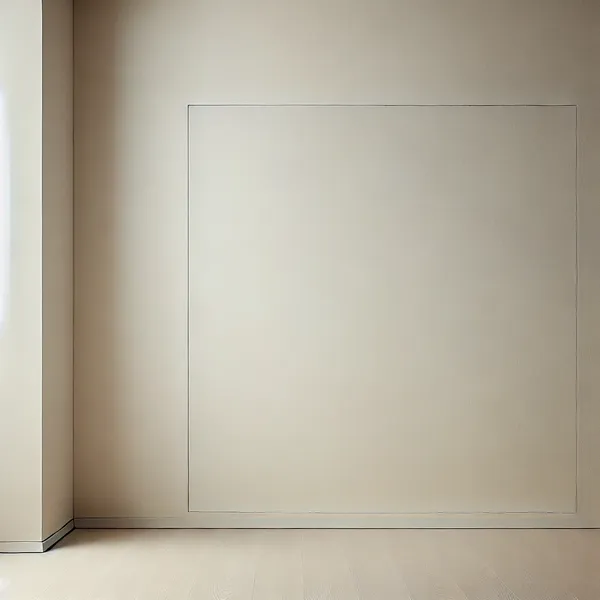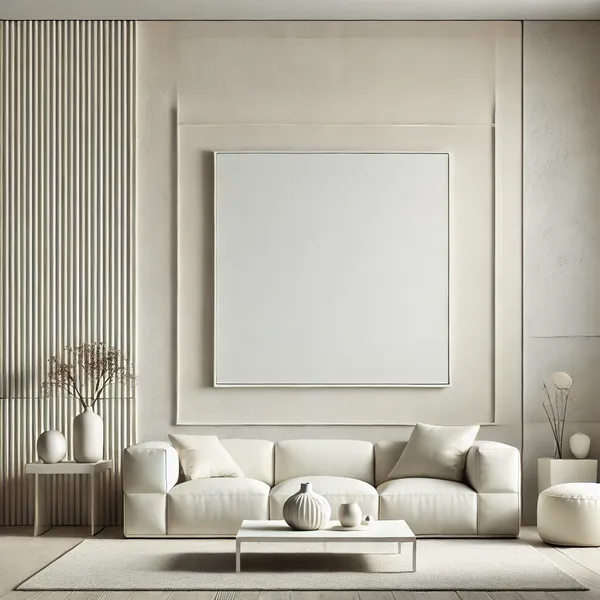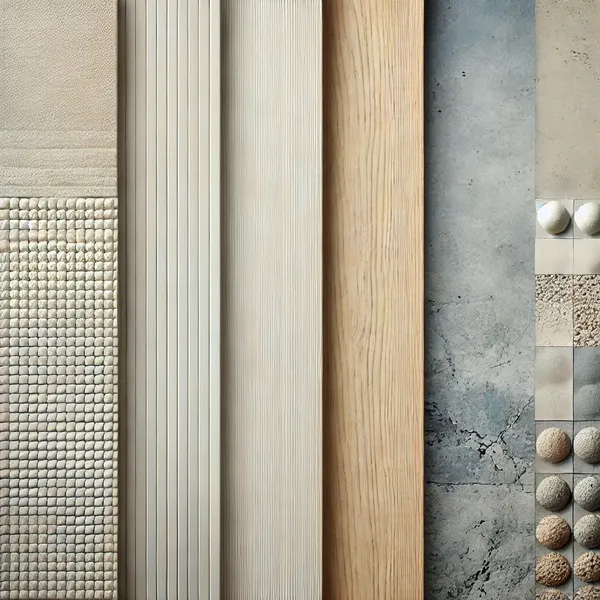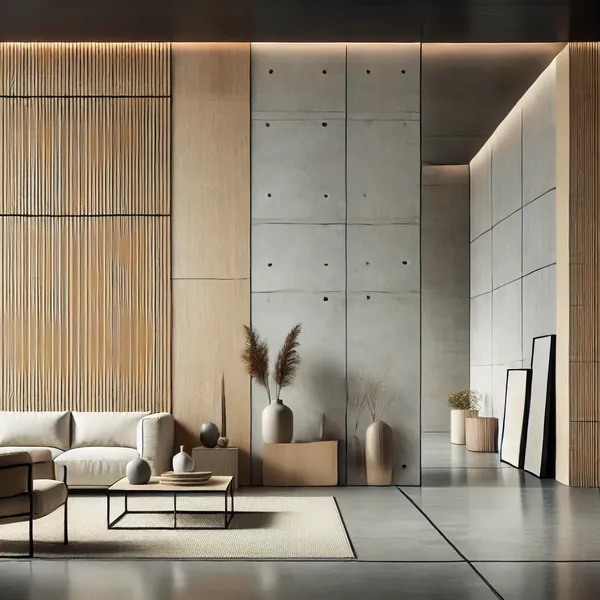Have you had enough mess in your home, and are you now willing to keep it clean? Minimalist wall treatments are a great way to add sophistication and serenity to your living.
Dream of flawless white walls with some texture – but not too much to overshadow the room, not too much to overpower.
Now that we have established the effects of minimalist wall treatments let us look at how they can dramatically change your living space and how you could incorporate it into your home.
What Has Been Defined As Minimalist Wall Treatments?

Minimalist wall treatments can be defined as designs that introduce nothing disturbing to the eye and are as simple as possible.
The thought is to leave everything off base and free from stuffiness to give a serene and invulnerable environment.
Minimalism is a concrete concept that starts with design, and its main idea is to leave out the unessential and stay only with the necessary.
This could include anything from the textures used on the walls to the neutral colors or natural materials.
Why Choose Minimalist Wall Treatments?

Here are a few reasons why minimalist wall treatments are perfect for any space:
- Clean Look: There should be a primary source of advertising, which is simplicity. Such non-brick-and-mortar designs make a room look spacious.
- Focus on Quality: As more details are left out of the design, the focus is on material quality and surfaces.
- Timeless Appeal: Trends are something other than what Minimalist designs conform to; thus, they can never go out of fashion.
- Easy to Maintain: Since the use of elements in the interior is reduced, cleaning and maintenance of the space is relatively straightforward.
- Versatility: Sleek approaches can be organized in any living area, whether the interior is a bedroom, a living room, or a studio.
Types of Minimalist Wall Treatments

Now, let’s discuss several of the most common minimalist wall treatments and how to use them in your home.
1. Neutral Paint Colors
Another simple method of attaining minimalistic walls is using light colors on the walls. It is recommended that light colors such as white, grey, beige, and soft pastels are used in creating this kind of environment.
These shades perfectly complement other interior details; therefore, furniture and decor become accents, while they do not become accents that dominate the room.
Why Neutral Paint Colors Work:
- First of all, they make the room look larger and lighter.
- More to the point, choosing neutral tones has the benefit of still being in fashion many years from now.
- These colors can be easily matched with almost any furniture piece and accessory.
Tips for Using Neutral Paint:
- If you want to bring some warmth, it is better to use warmer shades of gray or beige rather than cold ones.
- A darker or medium shade neutral should be used on one wall to make the room look deeper but not overpowered.
2. Wood Panels or Wood Accents
Wood creates a natural character and brings warmth to every minimalist concept.
Having wooden panels or wooden veneer on the walls of your home not only brings some elements of depth to the spaces but also does not take much of the simple and minimalistic look away.
Whether you work with the remedy wood, the oar, or the light-colored wood, it will introduce that raw aesthetic.
Why Wood Works:
- People have always liked wood, which is well-suited for contemporary and country designs.
- It brings some interest to the room without overwhelming it with furniture.
- In a more subdued manner than other grains, the variations of the natural structure can be appealing here.
How to Use Wood:
- Above them, you can try wooden panels for a feature wall behind your bed or sofa.
- Window or door accent woods enhance a room and make it abundant.
3. Concrete Walls
Concrete walls are preferred for a denser and more contemporary minimalist look. They have a lot of texture and weight while not overly dominating a room because of their imperfect finish.
Picking concrete as flooring can be daring, but the right furniture and home accessories will help tone it down.
Benefits of Concrete Walls:
- Concrete makes the atmosphere urban and modern.
- It fits nicely in contemporary or even industrial interior designs of houses.
- It is a very hardy material and requires extremely little care.
How to Incorporate Concrete:
- Use concrete panels or get concrete-effect wallpaper on your walls if it’s temporary.
- It is best worn with more neutral furniture to have the proper proportions.
4. Textured Wall Finishes
The least invasive and complexity-related wall treatment sometimes involves a textured finish.
Independent elements such as plastering, stucco, or cement give a layout of space, depth, and fascination with few themes or colorings.
Hence, these finishes provide natural or soft outlooks and can significantly enhance a room’s outlook.
Why Texture Works:
- Textual enhances esthetic appeal and does not overpower the items.
- It gives the impression that something is ‘lived in’ while also keeping with the ‘less is more’ approach.
- Even a white wall can seem far from boring if the decorators pay attention to the layers of texture that they are creating.
How to Use Textures:
- It gives a lime plaster finish that looks more professional than other types of plastering and has a richness that looks fancy.
- If you prefer a rough, simple cottage lo, using stucco in natural or natural color will be perfect.
5. Wallpaper with Simple Patterns
Of course, many people will conclude that wallpaper is unsuitable for a minimalist home as it generally comes with heavy decorations.
However, even wallpaper with simple graphics will look perfect in a minimalist interior.
These are usually mild patterns such as stripes, geometrical figures, or faint flowering. These patterns provide depth, but at the same time, they do not clutter up the design.
Why Simple Patterns Work:
- They make the wall come alive without taking over what is happening in the space.
- Absolute patterns, such as stripes, may help a room look taller or longitudinally longer.
- In essence, specific colors and patterns should be avoided.
How to Use Simple Patterns:
- Select monochrome wallpaper for a traditional bare look to give a more classy look.
- For example, wallpaper should be used on one wall in a room or on the wall behind an oversized piece of furniture.
6. Glass or Mirrored Panels
One of the valuable types of partitions – glass or mirrored or otherwise clear reflection wall panels- can help make stereotypically ascetic and minimalistic interiors more organic and luxurious.
These emerge with a property that lets them affect the light in the room, making it seem larger and fuller.
Mirrors are also used, adding a touch of elegance without ultimately compromising on the modern feel.
Why Glass and Mirrors Work:
- Mirrors have some illusion of increasing the space area and also provide openness.
- They can act like mirrors, equally illuminating the indoors making the place seem warm and comfortable.
- Glass can add a flat, new-age, polished feeling to your walls.
Tips for Using Glass or Mirrored Panels:
- They are best employed as a backdrop to a plain couch or bed.
- Make sure the house or room is clear of many mirrors; one big, lovely mirror will do better than having many little mirrors around.
7. Industrial Steel or Metal Panels
To achieve a more sleek and contemporary type of minimalist, metal, including steel or aluminum panels,s can add that industrial touch.
It makes one think of Gronholm for a moment. These materials are strong, sleek, and durable and fit best in new-age homes with a little more edge.
Why Metal Works:
- Metals are eye-catching but look plain or straightforward, as some may prefer.
- They are highly resistant and need little or no maintenance.
- Metals shine or gleam, thus making your rooms brighter and more prominent than they are.
How to Use Metal:
- It’s best to use metal for accent or highlighter walls in the kitchen or living room.
- While using metal walls in the room, one should complement them with other gentle furniture to avoid pregnancy of the room by the metal’s hardness.
8. Floating shelves or wall-mounted art.
Complex wall designs or massive pieces of furniture need to be better accommodated in minimalist interior design; therefore, minimalist walls can use floating shelves or simple frames where art pieces can be hung.
These add character to the wall without overdoing it in some houses. Thus, floating shelves allow for the showcasing of ornaments with the retention of an extensive, light ambiance.
Why Floating Shelves and Walls Art Work:
- They offer shelving and displays that do not encroach on the room space.
- Tackled on the wall can be fundamental and practical, just the artwork’s structure, with no distractions.
- Shelves uplift the space and keep it clutter-free without enclosing structures such as cabinetry.
How to Use Floating Shelves and Art:
- You here mean that we do not over-accessorize the house with artwork and recommend using only one or two that best fit the designated area.
- Choose open shelves to store only required and symbolic objects.
9. Accent Walls using Natural Stone
To get the best out of a minimalist theme, consider using natural stones as accent walls for a higher-end look.
Undoubtedly, marble, granite, and slate add the feeling of natural stonework inside the house, making a big and bold statement piece without the need for a loud jewelry tone.
Why Natural Stone Works:
- Stone is another way to design a house and give it some sort of luxurious feeling, but not to the extent of a poplux.
- It has a more natural finish, which will complement the contemporary furniture.
- It is very sturdy and can serve a house for many years, maybe even the life of the people living there.
How to Use Natural Stone:
- Make a modern marble artifact as a fireplace or headboard backdrop.
- Use stone properly as a secondary feature in kitchens or corridors, doors, windows, etc.
How to Choose the Right Minimalist Wall Treatment

When deciding on the proper minimalist wall treatment for your space, consider the following factors:
- Room Size: Semi-transparent treatments such as white or beige paints and glass look best in small rooms, giving an illusion of a larger room. More comprehensive or pear-finished rooms may be made to appear even more homely by the use of darker colors on the walls.
- Functionality: There is usually a lot of caress on the surfaces of space, which is very busy; therefore, one should opt for materials such as concrete or metal. Soft texture, nonbright, or even dull color might be desirable in sleeping areas such as the bedroom.
- Personal Style: There’s classy, and then there is boring, so you must bring minimalism into your living room design. You can continue incorporating your preferred patterns at a low profile level, embracing natural products or art pieces of your choice.
Final Thoughts
In its purest form, minimalist wall treatments aim at making a room or an area. It has a cozy and clinical feel, and the interior design is minimalist and modern.
Whether you decide to paint the walls in pastel colors, leave the wooden furniture in its original color, or use the natural texture of fabrics you choose when decorating the marriage, the basic idea is to leave a message rather than draw attention to themselves.
Minimalism does not equal boring or uncomfortable; minimalism means embracing a lifestyle that exudes elegance and lets your room, or even your life –take a breath. With these considerations in mind, you can design your minimalist abode in any area of your house you desire.